55 Alarming Animals In Captivity Statistics
This page contains affiliate links. We may earn money or products from the companies mentioned in this post through our independently chosen links, which earn us a commission. Learn More

Mankind has always lived side-by-side with wild animals, though the nature of our relationship with animals has changed over time.
Goats are thought to have been the first animals domesticated by humans, followed quickly by sheep. Chickens were domesticated in Southeast Asia roughly 10,000 years ago but it wasn’t until much later that humans began domesticated larger animals – primarily livestock such as horses and oxen.
Animals kept under human care are said to be held in “captivity.” This word typically applies to captive animals in zoos, laboratories, and even on farms. The term is used less often for livestock and pets.
Today, an estimated 1 million vertebrate animals live in captivity around the world. There are over 10,000 zoos situated across the globe along with an unknown number of animal parks and even private collections. The desire of man to keep wild animals as pets or purely as a source of entertainment may never cease but perhaps the following statistics will help you see the darker side of this issue.
Check out our animals in captivity statistics infographic and keep reading to learn more!
Top 6 Animals In Captivity Statistics In The U.S.
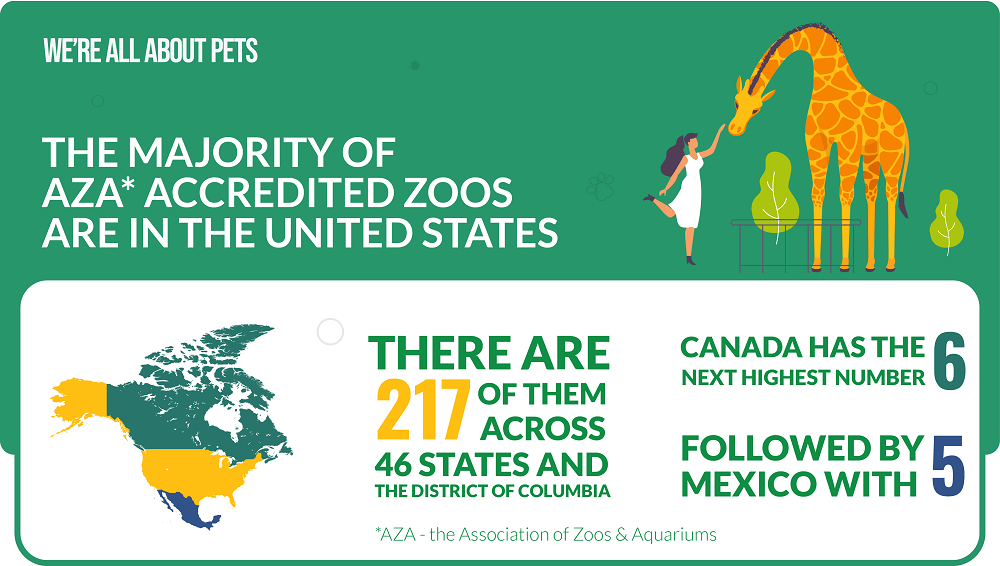
- As of 2020, the Association of Zoos & Aquariums (AZA) stated that there were 240 accredited zoos and aquariums across 13 countries.
- The majority of AZA accredited zoos are in the United States – there are 217 of them across 46 states and the District of Columbia. Canada has the next highest number (6), followed by Mexico with 5.
- According to AZA statistics, there are roughly 800,000 animals in the care of accredited AZA facilities. This includes a total of over 6,000 different species, including 1,000 threatened or endangered species.
- Accredited zoos and aquariums contribute over $22 billion to the United States economy each year. They support nearly 200,000 jobs in the U.S. as well.
- AZA accredited zoos serve over 200 million visitors worldwide each year – over 183 million in the United States alone.
- There are more captive tigers in zoos in the United States than roam freely in the wild worldwide. Wild populations are estimated at 3,200 with an estimated 5,000 in captivity.
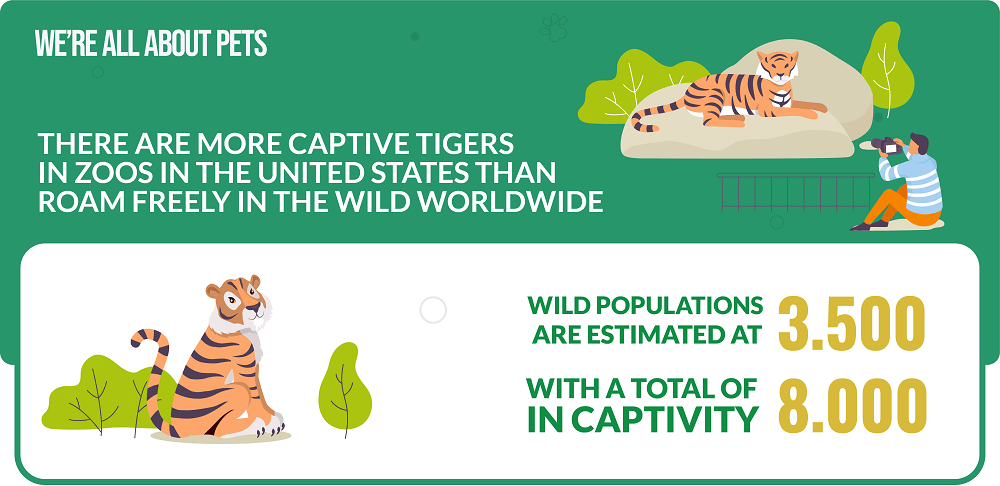
7 Statistics About Marine Animals In Captivity
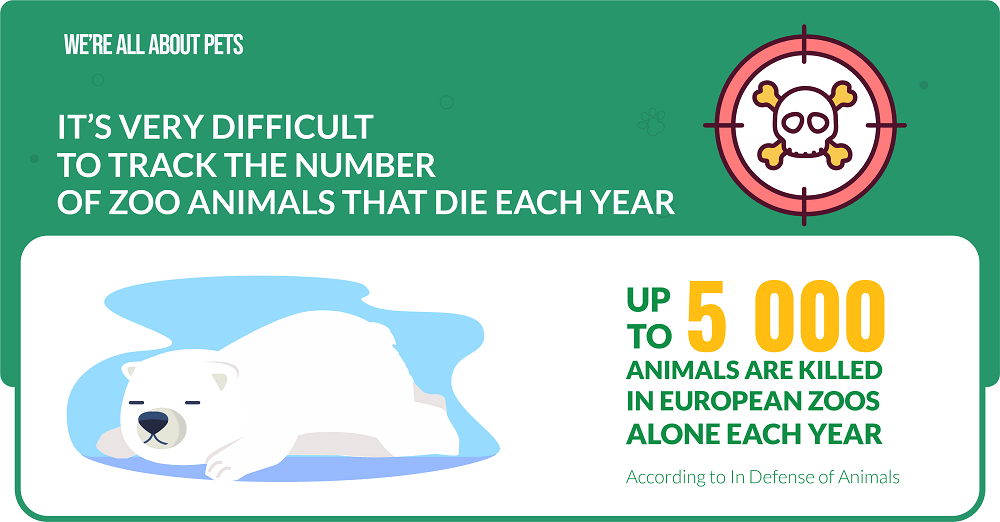
- Cetaceans (whales, dolphins, and porpoises) only spend 10 to 20 percent of their time at the surface in the wild but up to 90% of their time in captivity.
- According to a 1999 survey of US citizens by Yale University researchers, four-firths of respondents stated that marine mammals shouldn’t be kept in captivity unless there are significant scientific or educational benefits.
- A 2014 US poll revealed that more than half of respondents opposed keeping orcas in captivity. A British poll that same year revealed that 86% of respondents wouldn’t visit a captive whale or dolphin facility.
- Claims that conservation is the primary purpose for the public display of marine mammals are very misleading. Fewer than 5 to 10% of zoos and aquariums are involved in substantial conservation programs. Of those that are, less than 1% of income generated is spent on these programs.
- The majority of marine mammal species currently being held and bred in captivity are neither threatened nor endangered. Rather, they are bred primarily to provide replacement animals for public display.
- There have been only 6 documented cases of bottlenose dolphins bred in captivity being released into the wild. Four were part of an Australian release project in 1992 and two were released in the Black Sea in 2004.
- Dolphinaria routinely separate calves from their mothers long before they would acquire the knowledge and skills necessary to survive in the wild. For example, SeaWorld Orlando separated Sumar, a male orca, from his mother at just 6 months of age and moved him to another facility in California when he was less than 10 months old.
12 International Animal Captivity Statistics
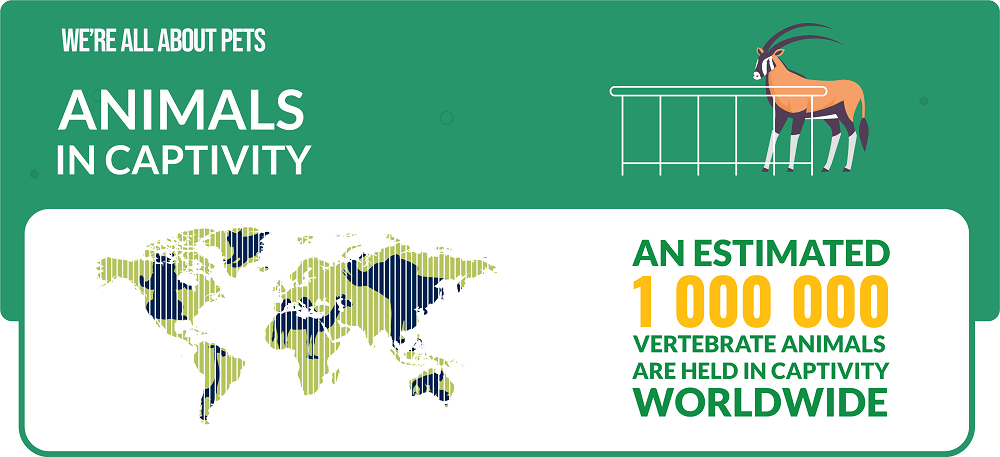
- An estimated 1 million vertebrate animals are held in captivity worldwide.
- There are an estimated 10,000 zoos around the world, accumulating over 600 million visitors each year. This statistic only accounts for accredited zoos, not roadside attractions or private zoos.
- Animal abuse is incredibly widespread among World Association of Zoos and Aquariums (WAZA) facilities, estimated at 75%. Furthermore, there is a 96% chance an elephant in an entertainment facility is being treated poorly.
- Polar bears kept in zoos have a million times less space than they would have in the wild.
- Lions and tigers have about 18,000 times less space in captivity than they would in the wild.
- Only about 18% of captive animals are endangered. Most zoos don’t engage in the conservation of rare or endangered animals.
- Petting and other forms of human contact are the most common stressful activity for captive animals, offered by roughly 43% of WAZA partners.
- Roughly one-third (about 33%) of WAZA partner facilities allow visitors or walk or swim with the animals and 30% make zoo animals perform in front of people.
- As many as 23% of WAZA partner facilities let visitors hand-feed the animals.
- It’s very difficult to track the number of zoo animals that die each year. According to In Defense of Animals, up to 5,000 animals are killed in European zoos alone each year.
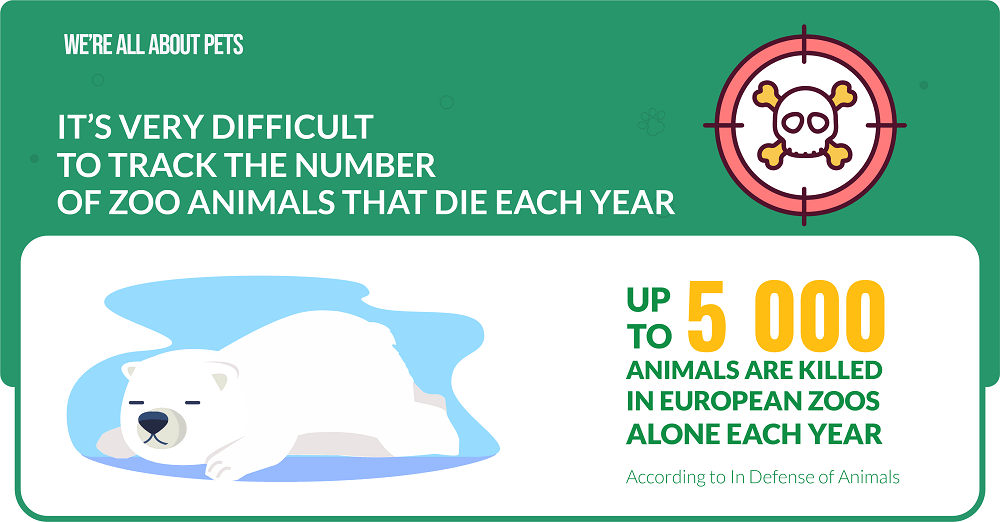
- A Freedom for Animals study revealed that at least 7,500 animals (possibly up to 200,000) are deemed ‘surplus’ by European zoos and may be subject to culling.
- China has more than 5,000 tigers in captivity which are used for traditional medicine. According to Traditional Chinese Medicine, certain bones and body parts have healing properties.
12 Shocking Statistics About Elephants In Zoos
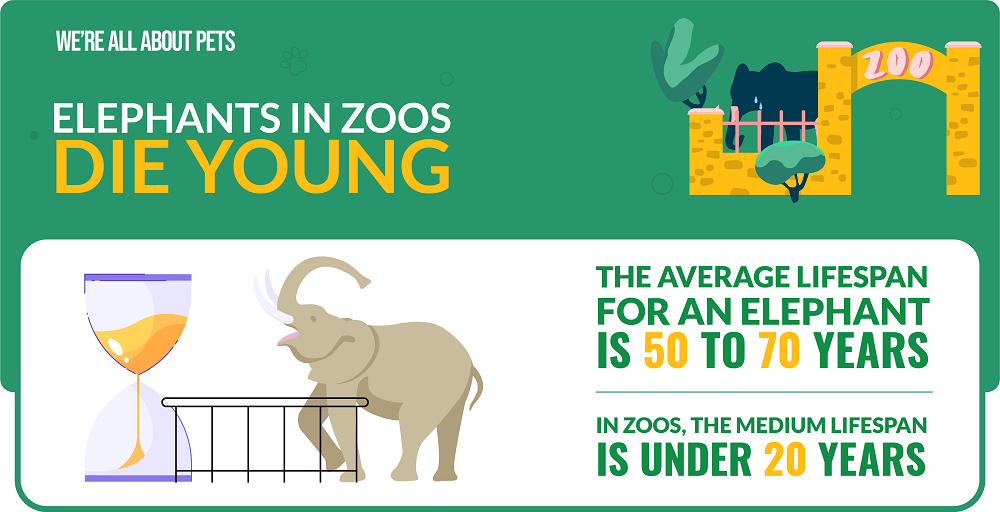
- Elephants in zoos die young. In the wild, the average lifespan for an elephant is 50 to 70 years, depending on the species. In zoos, the medium lifespan is under 20 years.
- Elephants kept in zoos are not domesticated – they are wild. Roughly 48% of the world’s zoo elephant population (over 500 elephants) are kept in Europe.
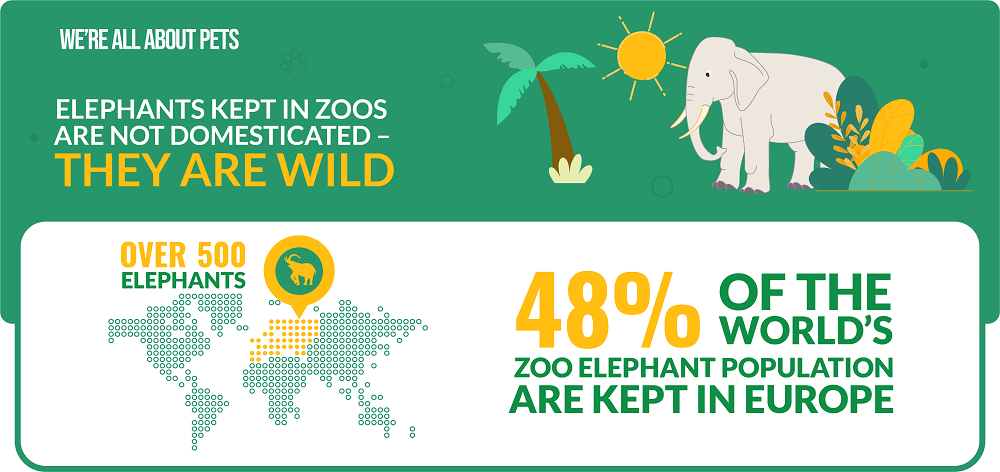
- The minimum enclosure size recommended by the American Zoo and Aquarium Association (AZA) and the European Association of Zoos and Aquaria (EAZA) IS STILL 60 to 100 times smaller than even the smallest wild elephant territory.
- As many as 90% of European zoo elephants have no access to natural grazing and they can spend up to 16 hours a day confined indoors during cold weather.
- In about 80% of European zoos, elephant handlers are trained to dominate elephants through psychological means, physical restriction, and punishment. Elephants may be subjected to electric cattle prods, ropes, and chains. This is called traditional free contact.
- Elephants have been responsible for at least 6 deaths in European zoos using the free contact system since 1990. In the UK, three deaths occurred in less than 3 years.
- Elephant breeding rates in zoos are 10 times slower than in the wild or even in Burmese timber camps. The average zoo female elephant produces 1 calf in her lifetime compared to 6 in the wild.
- Female zoo elephants have a much shorter reproductive life than wild elephants – roughly one quarter of wild elephants. Zoo elephants that breed before 12 years of age die earlier than their wild counterparts.
- Roughly 30% of male zoo elephants are infertile due to low sperm quality and 75% of those had low sperm volume.
- Data shows that 60% of zoo elephants that survive through infancy end up dying through illness. Common causes include circulatory problems, foot problems, herpes, and tuberculosis.
- High-energy diets and lack of exercise contribute to unhealthy body weight in zoo elephants. Female Asian zoo elephants were found to be 31% to 72% heavier than their wild counterparts in one study.
- It is extremely expensive to keep elephants in non-native countries. Keeping an elephant in a western zoo is estimated to be 50 times more expensive than wild conservation.
8 Circus Animal Statistics
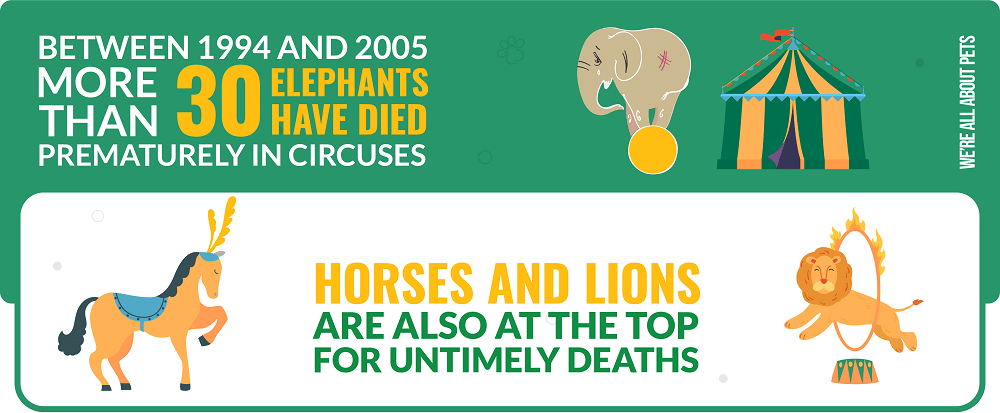
- Every major circus that uses wild animals in the United States has been cited for violating the minimal standards of care set forth by the U.S. Animal Welfare Act (AWA).
- England only banned wild animals in circuses within the last few years. The Wild Animals in Circuses Act of 2019 prohibited the use of wild animals in traveling circuses.
- Circus animals spend 11 months of the year traveling in box cars with no climate control, often eating, sleeping, and defecating all in the same cage.
- Roughly 96% of a circus animal’s life is spent in a cage or in chains.
- Since 1990, over 123 attacks on humans by captive big cats have been documented in the United States. Thirteen of them resulted in fatal injuries.
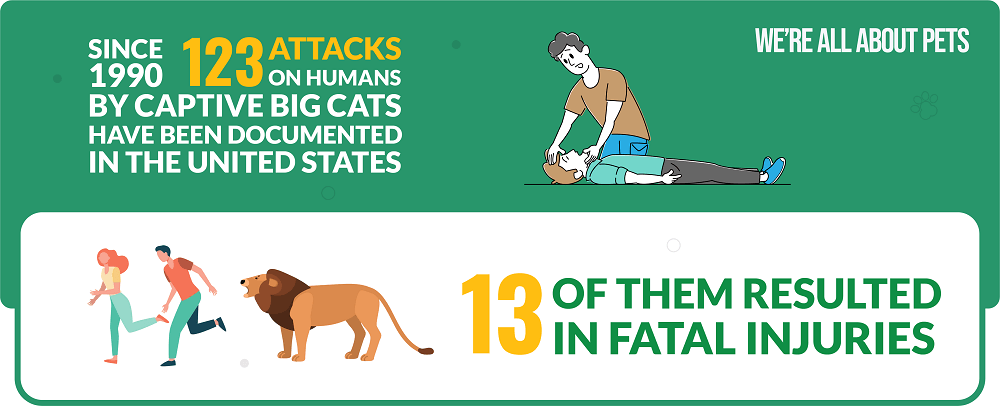
- Since 2000, more than 35 instances have been recorded of circus elephants bolting and running amok through the streets. Some have attacked members of the public and injured or killed their handlers.
- Between 1994 and 2005, more than 30 elephants have died prematurely in circuses. Horses and lions are also at the top for untimely deaths.
- An undercover investigation by Freedom for Animals in 2009 revealed that elephants at the Great British Circus were chained for up to 11 hours per day.
10 Statistics About Primates As Pets
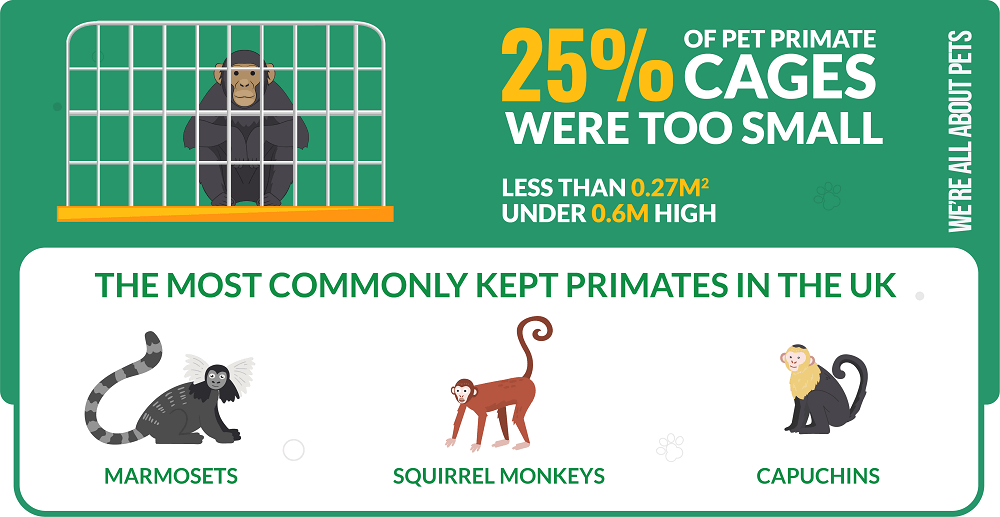
- Due to lack of regulation and the proliferation of private trade, no one knows exactly how many primates are kept as pets. Wild Futures estimates between 3,000 and 9,000 are kept in the UK alone.
- The Allied Effort to Save Other Primates estimates there are over 15,000 primates kept as pets in the United States. Sale prices range from $1,500 to $50,000.
- Over the last decade, the RSPCA has received nearly 500 calls about primates kept or being traded as pets (totaling nearly 1,000 individual primates).
- The previous statistic averages to 50 calls a year which is 4 to 12 times higher than calls about common companion animals like dogs and cats.
- Most primates are highly social animals – keeping them alone can cause depression, self-mutilation, and early death. Out of nearly 200 incidents investigated by the RSPCA, primates were being kept alone in 60% of cases.
- In the United States, there are no federal laws prohibiting the trade or keeping of nonhuman primates as pets. In fact, 12 states allow them with few restrictions.
- Only 26 U.S. states have bans in keeping primates as pets and another 8 require some form of license.
- Young primates are highly dependent on their mothers and hand-rearing can have long-term harmful effects. Surveys of online advertisements reveal over 60% being sold at an age when they would still be dependent on their mother (infants up to 12 weeks).
- RSPCA investigations revealed that over 25% of pet primate cages were too small (measured less than 0.27m2 and under 0.6m high).
- According to RSPCA data, the most commonly kept primates in the UK are marmosets (81%), followed by capuchins and squirrel monkeys.









Amy
Wow, there are so many blatantly made up statistics and "facts" here, I'm honestly surprised you haven't been sued by someone yet. I note that you haven't provided a source for a single thing you've claimed, that should be a red flag for your readers. Seriously though, at least 3/4 of this page is blatantly made up, a Wikipedia article would be more accurate. That at least has to provide sources, you couldn't even get that far, probably because you - again - just blatantly made everything up. I genuinely don't know where to begin in debunking this all, it's a monumental amount of lies. You should be disgusted at yourself. Oh, and before you declare I don't know what I'm talking about - my qualifications in conservation wildlife biology, and all my time running around the world working in conservation says I do. What are your qualifications, pray tell?
Kate Barrington
Hi Amy, we appreciate your concern and it was certainly a mistake on our part not to include the links. I've gone through and added 30 links to sources for these statistics, most of which come from national and international animal protection/conservation organizations.